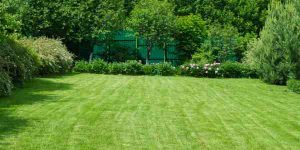Exploring Vertical Gardens

Exploring Vertical Gardening: Transform Your Space with Impact Landscapes
In today’s urban environments, where outdoor space is often at a premium, vertical gardening offers an innovative solution for maximizing green space. Whether you live in a compact city apartment with a small balcony or a suburban home with limited yard space, vertical gardening can transform your space into a lush, vibrant oasis. At Impact Landscapes, we believe in harnessing the potential of vertical gardening to enhance your living environment. Let’s explore the benefits, methods, and ideas for creating a stunning vertical garden.
What is Vertical Gardening?
Vertical gardening involves growing plants upwards, using structures like walls, trellises, and towers, rather than spreading out horizontally. This approach not only saves space but also adds a unique aesthetic appeal to your home or garden. From vegetables and herbs to flowers and succulents, a wide variety of plants can thrive in vertical gardens, making them a versatile and attractive option for any space.
Benefits of Vertical Gardening
- Space Efficiency: Vertical gardening is ideal for small spaces. By growing upwards, you can utilize walls, fences, and other vertical surfaces, leaving more room for other activities or plants at ground level.
- Improved Air Quality: Plants help to purify the air by absorbing pollutants and releasing oxygen. A vertical garden can enhance indoor and outdoor air quality, contributing to a healthier living environment.
- Aesthetic Appeal: Vertical gardens add a striking visual element to any space. They can serve as living art pieces, enhancing the beauty of your home with greenery and vibrant blooms.
- Enhanced Privacy: Vertical gardens can act as natural privacy screens, shielding your space from prying eyes while adding a green backdrop to your environment.
- Ease of Maintenance: Vertical gardens can be easier to maintain compared to traditional gardens. Plants are often at eye level, reducing the need for bending and kneeling.
- Increased Yield: For vegetable and herb gardens, growing vertically can increase your yield by allowing more plants to be grown in a limited area.
Methods of Vertical Gardening
There are various techniques to create a vertical garden, each suited to different spaces and preferences. Here are some popular methods:
- Wall-Mounted Planters: These are containers or pockets attached directly to a wall. They come in various materials, such as fabric, plastic, or metal, and can be arranged in creative patterns.
- Trellises and Arbors: Ideal for climbing plants like ivy, roses, or beans, trellises and arbors provide a sturdy framework for plants to grow upwards.
- Vertical Towers and Pallets: These structures can hold multiple pots or have built-in planters. They are perfect for creating a green wall effect in small spaces.
- Hanging Planters: Suspended from ceilings or mounted on walls, hanging planters are great for trailing plants like ferns or philodendrons.
- Hydroponic Systems: For a more high-tech approach, hydroponic vertical gardens use a soil-less system where plants are grown in nutrient-rich water solutions. These systems are efficient and can be set up indoors or outdoors.
Selecting Plants for Vertical Gardens
Choosing the right plants is crucial for the success of your vertical garden. Consider the following factors:
- Light Requirements: Assess the amount of sunlight your vertical garden will receive and select plants that match those light conditions. For sunny spots, opt for succulents, herbs, and certain vegetables. For shadier areas, choose ferns, ivy, and shade-tolerant flowers.
- Growth Habit: Select plants that naturally grow upwards or have a compact growth habit. Climbing plants, vining plants, and those with a tendency to trail are excellent choices.
- Maintenance Needs: Consider how much time you can dedicate to maintaining your garden. Choose low-maintenance plants if you have a busy schedule.
Some excellent plant choices for vertical gardens include:
- Herbs: Basil, parsley, mint, and thyme
- Vegetables: Tomatoes, peppers, lettuce, and beans
- Flowers: Petunias, begonias, and marigolds
- Succulents: Echeveria, sedum, and aloe vera
Design Ideas for Vertical Gardens
- Living Walls: Create a stunning living wall with a mix of colorful flowers and lush greenery. This can serve as a focal point in your outdoor space or a statement piece indoors.
- Kitchen Garden: Install a vertical garden in your kitchen or balcony to grow fresh herbs and vegetables. This not only adds greenery but also provides easy access to fresh ingredients for your meals.
- Privacy Screen: Use a vertical garden as a natural divider between different areas of your yard or balcony. This can create a sense of privacy while adding a green touch to your space.
- Vertical Succulent Garden: Succulents are perfect for vertical gardening due to their low water needs and compact growth habit. Arrange them in artistic patterns for a modern, stylish look.
- Mixed Planting: Combine different types of plants in your vertical garden for a diverse and visually appealing display. Mix herbs, flowers, and foliage plants to create a dynamic and vibrant garden.
Conclusion
Vertical gardening is a versatile and innovative approach to greening your space, offering numerous benefits from improved aesthetics to enhanced air quality. At Impact Landscapes, we are passionate about helping you create beautiful, functional outdoor spaces. Whether you’re a gardening novice or a seasoned pro, vertical gardening can transform your home into a lush, vibrant retreat. Contact us today to learn more about how we can help you design and install your perfect vertical garden.



